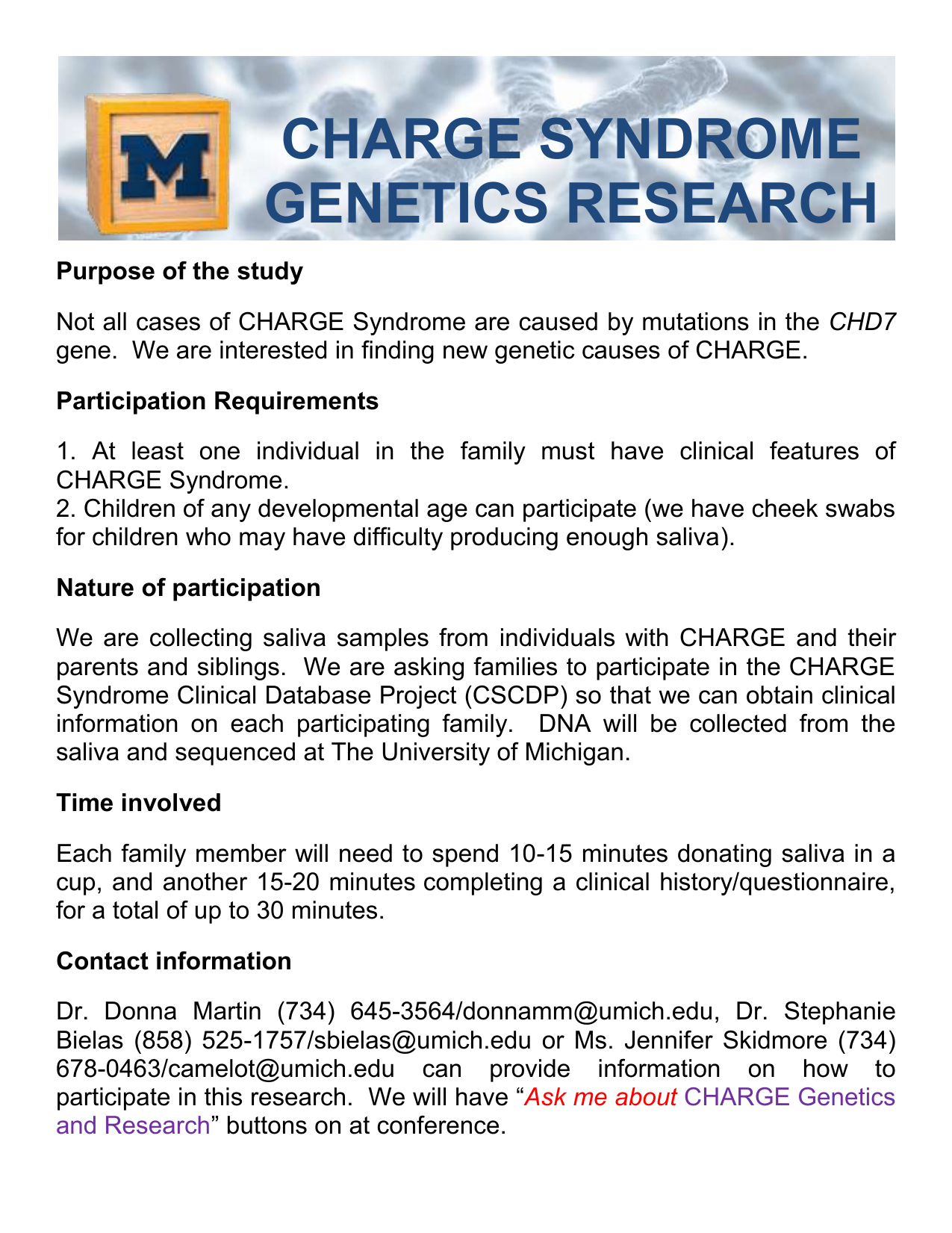
Death in CHARGE syndrome after the neonatal period.
CHARGE SYNDROME LIFE SPAN FREE
2017 175:507–15.īergman JE, Blake KD, Bakker MK, du Marchie Sarvaas GJ, Free RH, van Ravenswaaij-Arts CM. 2020 106:356–70.īalasubramanian R, Crowley WF., Jr Reproductive endocrine phenotypes relating to CHD7 mutations in humans. Evaluation of DNA methylation episignatures for diagnosis and phenotype correlations in 42 mendelian neurodevelopmental disorders.

France, Barat-Houari M, Ruiz-Pallares N, Andrau JC, Lacombe D, Van-Gils J, Fergelot P, Dubourg C, Cormier-Daire V, Rondeau S, Lecoquierre F, Saugier-Veber P, Nicolas G, Lesca G, Chatron N, Sanlaville D, Vitobello A, Faivre L, Thauvin-Robinet C, Laumonnier F, Raynaud M, Alders M, Mannens M, Henneman P, Hennekam RC, Velasco G, Francastel C, Ulveling D, Ciolfi A, Pizzi S, Tartaglia M, Heide S, Héron D, Mignot C, Keren B, Whalen S, Afenjar A, Bienvenu T, Campeau PM, Rousseau J, Levy MA, Brick L, Kozenko M, Balci TB, Siu VM, Stuart A, Kadour M, Masters J, Takano K, Kleefstra T, de Leeuw N, Field M, Shaw M, Gecz J, Ainsworth PJ, Lin H, Rodenhiser DI, Friez MJ, Tedder M, Lee JA, DuPont BR, Stevenson RE, Skinner SA, Schwartz CE, Genevieve D, Sadikovic B. Birth defects after early pregnancy use of antithyroid drugs: a Danish nationwide study. Birth defects after use of antithyroid drugs in early pregnancy: a Swedish nationwide study. All rights reserved.Īndersen SL, Lönn S, Vestergaard P, Törring O. GeneReviews is a registered trademark of the University of Washington, Seattle. Once the CHD7 pathogenic variant has been identified in an affected family member, prenatal and preimplantation genetic testing are possible.Ĭopyright © 1993-2023, University of Washington, Seattle. Although many individuals with CHD7 disorder are not able to reproduce, each child of an individual with CHD7 disorder has a 50% chance of inheriting the pathogenic variant. The risk to the sibs of the proband depends on the genetic status of the proband's parents: (1) If a parent of the proband has a CHD7 pathogenic variant, the risk to the sibs of inheriting the pathogenic variant is 50% (2) If the CHD7 pathogenic variant identified in the proband cannot be detected in the leukocyte DNA of either parent, the empiric recurrence risk to sibs of a proband is approximately 1%-2% because of the possibility of parental germline mosaicism. In rare instances, an individual with CHD7 disorder inherits a pathogenic variant from a heterozygous parent.

Surveillance: Requires routine follow up of manifestations identified in infancy/childhood, as well as ongoing monitoring of growth, development, educational progress, behavior, and possible endocrine issues.Īgents/circumstances to avoid: Because of the increased risk of post-anesthesia airway complications, procedures requiring anesthesia should be minimized and combined whenever possible.ĬHD7 disorder is an autosomal dominant disorder typically caused by a de novo pathogenic variant. Treatment of manifestations: Management of the manifestations of CHD7 disorder can be complex and require a multidisciplinary approach involving clinicians, therapists, and educators. The diagnosis of CHD7 disorder is established in a proband with suggestive clinical and imaging findings and a heterozygous pathogenic variant in or deletion of CHD7 identified by molecular genetic testing. Despite these complications, the life expectancy for many individuals can be normal. In childhood, adolescence, and adulthood, decreased life expectancy is likely related to a combination of residual heart defects, infections, aspiration or choking, respiratory issues including obstructive and central apnea, and possibly seizures. Life expectancy highly depends on the severity of manifestations mortality can be high in the first few years when severe birth defects (particularly complex heart defects) are present and often complicated by airway and feeding issues. Following the identification of the genetic cause of CHD7 disorder, the phenotypic spectrum expanded to include cranial nerve anomalies, vestibular defects, cleft lip and/or palate, hypothyroidism, tracheoesophageal anomalies, brain anomalies, seizures, and renal anomalies. The mnemonic CHARGE syndrome, introduced in the premolecular era, stands for coloboma, heart defect, choanal atresia, retarded growth and development, genital hypoplasia, ear anomalies (including deafness). CHD7 disorder encompasses the entire phenotypic spectrum of heterozygous CHD7 pathogenic variants that includes CHARGE syndrome as well as subsets of features that comprise the CHARGE syndrome phenotype.


 0 kommentar(er)
0 kommentar(er)
